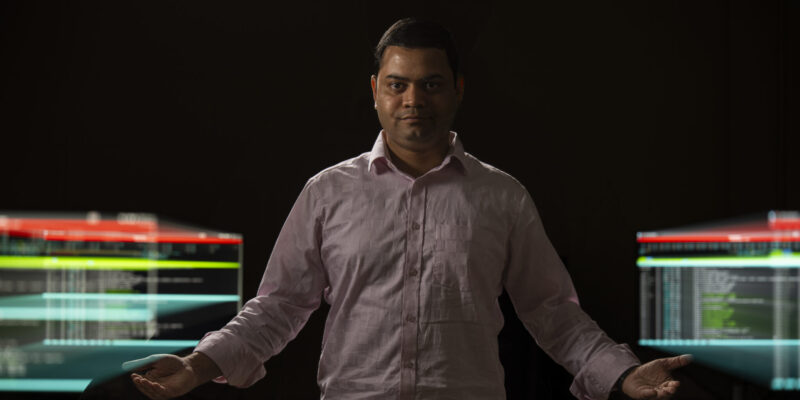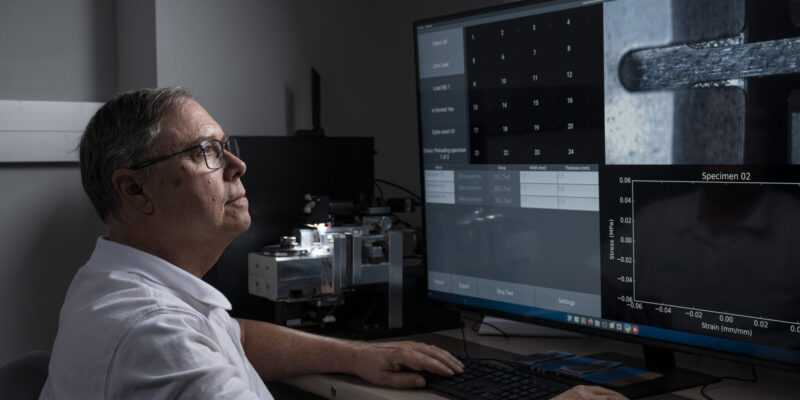Tag: research
Big data: S&T researcher paving new paths for more efficient transfers
When long-haul truckers hit the road with their freight, they often rely on GPS to help them find the best possible routes and adjust in real time. So why can’t the online systems for transferring large datasets, which typically rely on predetermined settings and don’t adjust in real time, take a similar approach?
Read More »Why predicting battery performance is like forecasting traffic − and how researchers are making progress
Lithium-ion batteries are quietly powering large parts of the world, including electric vehicles and smartphones. They have revolutionized how people store and use energy. But as these batteries become more central to daily life, they bring more attention to the challenges of managing them and the energy they store safely, efficiently and intelligently.
Read More »Traumatic brain injuries have toxic effects that last weeks after initial impact − an antioxidant material reduces this damage in mice
Traumatic brain injury is a leading cause of death and disability in the world. Blunt force trauma to the brain, often from a bad fall or traffic accident, accounts for the deaths of over 61,000 Americans each year. Over 80,000 will develop some long-term disability.
Read More »S&T researchers developing AI system to prevent pests, improve crop yield for rural farms
When many computer scientists say they are researching methods to stop bugs, they are likely referring to computer glitches and other issues. When Dr. Sajal Das from Missouri S&T says this, he is talking about the crawly and flying creatures afflicting agriculture operations.
Read More »S&T researchers focus on containing fuel in nuclear reactors with $1 million in federal support
Researchers at Missouri S&T are studying the strength of bonds between a new less-enriched uranium fuel and the metals that will contain it — allowing nuclear research reactors to potentially transition to a fuel with a reduced risk of being targeted or stolen for malicious purposes.
Read More »Missouri S&T researcher studies how energy shifts could improve tornado predictions
When the National Weather Service (NWS) issues a tornado warning, it’s based on storm rotation, wind patterns and other conditions suggesting a tornado may be imminent. With a $300,000 grant from the National Science Foundation, a Missouri S&T researcher is studying if a new factor could improve prediction accuracy.
Read More »Missouri S&T listed as a top engineering school in U.S. News rankings
The annual U.S. News & World Report rankings for the best universities for pursuing a graduate degree in engineering were released today (Tuesday, April 8), and Missouri S&T continues to be listed as the top public university in the state and among the nation’s best.
Read More »Recent Missouri S&T graduate develops potential treatment for traumatic brain injuries
When people experience traumatic brain injuries (TBIs), immediate damage occurs from the blows to the brain, but the harm can continue in the weeks and months that follow. Researchers from Missouri University of Science and Technology are studying how an antioxidant material could potentially stop this ongoing damage. “A person’s life can change in the blink […]
Read More »Missouri S&T researcher’s robotic bridge inspection system earns ASCE’s 2025 Pankow Award
A researcher at Missouri S&T has developed a robotic system to make bridge inspections faster, more comprehensive and safer. Dr. Genda Chen’s invention, called the Bridge Inspection Robot Deployment System, or BIRDS, has been selected for the American Society of Civil Engineers (ASCE) 2025 Charles Pankow Award for Innovation.
Read More »







